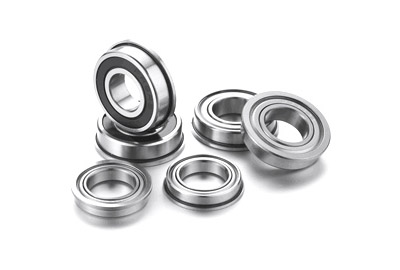News center
-
Company news
-
Industry news
-
Inch16 Series Bearing
-
6200 Series Bearing
-
Miniature motor bearings
-
Ball bearing for household appliances
-
Transmission bearing
-
6300 Series Bearing
-
6800 Series Bearing
-
Inch R Series Bearing
-
Auto and motorcycle ball bearing
-
6900 Series Bearing
-
Fitness equipment small bearings
-
Knowledge
Understanding the Different Types of Miniature Motor Bearings: A Comprehensive Guide
- Time of issue:2023-09-13
(Summary description)Discover the various types of miniature motor bearings and gain a deeper understanding of their uses and benefits in this comprehensive guide. From radial bearings to thrust bearings, learn how these
Understanding the Different Types of Miniature Motor Bearings: A Comprehensive Guide
(Summary description)Discover the various types of miniature motor bearings and gain a deeper understanding of their uses and benefits in this comprehensive guide. From radial bearings to thrust bearings, learn how these
- Categories:Knowledge
- Author:
- Origin:
- Time of issue:2023-09-13 12:00
- Views:
Information
Table of Contents:
1. Introduction: The Importance of Miniature Motor Bearings
2. Radial Bearings: Enhancing Stability and Performance
3. Deep Groove Ball Bearings: Versatile and Reliable
4. Angular Contact Ball Bearings: Optimizing Efficiency and Load Capacity
5. Thrust Bearings: Excelling in Axial Load Applications
6. Flanged Bearings: Secure Mounting and Space Optimization
7. Ceramic Bearings: Superior Performance and Durability
8. Hybrid Bearings: Combining the Best of Both Worlds
9. Roller Bearings: Handling Heavy Loads with Ease
10. Miniature Motor Bearing FAQs:
10.1 What are the different types of miniature motor bearings?
10.2 How do radial bearings enhance stability in miniature motors?
10.3 What are the advantages of using ceramic bearings?
10.4 Can miniature motor bearings handle heavy loads?
10.5 How do roller bearings differ from ball bearings?
11. Conclusion: Choosing the Right Miniature Motor Bearings for Optimal Performance
1. Introduction: The Importance of Miniature Motor Bearings
Miniature motor bearings play a crucial role in ensuring the smooth operation of various devices, from small electronic gadgets to precision machinery. These compact components are designed to reduce friction and support rotational movements, allowing motors to function efficiently and reliably. By understanding the different types of miniature motor bearings available, you can make informed decisions when it comes to selecting the most suitable option for your specific application.
2. Radial Bearings: Enhancing Stability and Performance
Radial bearings are the most common type of miniature motor bearings. They are designed to support radial loads, which are perpendicular to the shaft's axis. These bearings consist of an inner and outer ring, with rolling elements sandwiched in between. Radial bearings provide stability and reduce friction, ensuring smooth rotation and prolonging the motor's lifespan.
3. Deep Groove Ball Bearings: Versatile and Reliable
Deep groove ball bearings are a popular type of radial bearings. They have a deep groove design that enables them to handle both radial and axial loads. Their versatility makes them suitable for various miniature motor applications, from electric motors to small appliances. Deep groove ball bearings offer high-speed capabilities, low noise operation, and long service life.
4. Angular Contact Ball Bearings: Optimizing Efficiency and Load Capacity
Angular contact ball bearings are specifically designed to withstand both radial and axial loads simultaneously, making them ideal for miniature motor applications where the load direction constantly changes. These bearings have contact angles that allow them to handle higher thrust loads, ensuring optimal performance and efficiency.
5. Thrust Bearings: Excelling in Axial Load Applications
Thrust bearings are primarily designed to handle axial loads, making them essential for applications where the load acts parallel to the shaft's axis. They come in various designs, including ball, roller, and needle. Thrust bearings ensure smooth operation and prevent damage caused by excessive axial loads.
6. Flanged Bearings: Secure Mounting and Space Optimization
Flanged bearings, as the name suggests, have an extended flange on the outer ring. This flange provides additional support and enables secure mounting, making them suitable for applications that require precise positioning or when space optimization is crucial. Flanged bearings are commonly used in miniature motors for robotics, medical devices, and automation systems.
7. Ceramic Bearings: Superior Performance and Durability
Ceramic bearings are known for their exceptional performance and durability. They are made from advanced ceramic materials, such as silicon nitride or zirconium oxide, which offer superior hardness, corrosion resistance, and thermal stability. Ceramic bearings are highly recommended for high-speed and high-temperature miniature motor applications.
8. Hybrid Bearings: Combining the Best of Both Worlds
Hybrid bearings combine the benefits of ceramic and steel materials. They feature ceramic rolling elements and steel rings, offering a balance between performance and cost-effectiveness. Hybrid bearings provide improved speed capabilities, reduced friction, and extended service life compared to traditional steel bearings.
9. Roller Bearings: Handling Heavy Loads with Ease
Roller bearings are designed to handle heavy radial or axial loads. They utilize cylindrical or tapered rolling elements that distribute the load over a larger surface area, reducing friction and enabling smooth operation even under extreme conditions. Roller bearings are commonly used in miniature motor applications that require high load-carrying capacity.
10. Miniature Motor Bearing FAQs:
10.1 What are the different types of miniature motor bearings?
There are various types of miniature motor bearings, including radial bearings, deep groove ball bearings, angular contact ball bearings, thrust bearings, flanged bearings, ceramic bearings, hybrid bearings, and roller bearings.
10.2 How do radial bearings enhance stability in miniature motors?
Radial bearings provide stability by reducing friction and supporting radial loads, ensuring smooth rotation and prolonged motor lifespan.
10.3 What are the advantages of using ceramic bearings?
Ceramic bearings offer superior performance and durability due to their advanced ceramic materials, such as silicon nitride or zirconium oxide, which provide excellent hardness, corrosion resistance, and thermal stability.
10.4 Can miniature motor bearings handle heavy loads?
Yes, certain types of miniature motor bearings, such as thrust bearings and roller bearings, are specifically designed to handle heavy loads with ease.
10.5 How do roller bearings differ from ball bearings?
Roller bearings utilize cylindrical or tapered rolling elements, which distribute the load over a larger surface area, enabling them to handle heavier radial or axial loads compared to ball bearings.
11. Conclusion: Choosing the Right Miniature Motor Bearings for Optimal Performance
Understanding the different types of miniature motor bearings is crucial for selecting the most suitable option for your specific application. From radial bearings to thrust bearings, each type offers unique advantages and capabilities. Consider factors such as load requirements, speed capabilities, and environmental conditions to ensure optimal performance and longevity of your miniature motor. Choose wisely and enjoy the smooth and reliable operation of your devices.
1. Introduction: The Importance of Miniature Motor Bearings
2. Radial Bearings: Enhancing Stability and Performance
3. Deep Groove Ball Bearings: Versatile and Reliable
4. Angular Contact Ball Bearings: Optimizing Efficiency and Load Capacity
5. Thrust Bearings: Excelling in Axial Load Applications
6. Flanged Bearings: Secure Mounting and Space Optimization
7. Ceramic Bearings: Superior Performance and Durability
8. Hybrid Bearings: Combining the Best of Both Worlds
9. Roller Bearings: Handling Heavy Loads with Ease
10. Miniature Motor Bearing FAQs:
10.1 What are the different types of miniature motor bearings?
10.2 How do radial bearings enhance stability in miniature motors?
10.3 What are the advantages of using ceramic bearings?
10.4 Can miniature motor bearings handle heavy loads?
10.5 How do roller bearings differ from ball bearings?
11. Conclusion: Choosing the Right Miniature Motor Bearings for Optimal Performance
1. Introduction: The Importance of Miniature Motor Bearings
Miniature motor bearings play a crucial role in ensuring the smooth operation of various devices, from small electronic gadgets to precision machinery. These compact components are designed to reduce friction and support rotational movements, allowing motors to function efficiently and reliably. By understanding the different types of miniature motor bearings available, you can make informed decisions when it comes to selecting the most suitable option for your specific application.
2. Radial Bearings: Enhancing Stability and Performance
Radial bearings are the most common type of miniature motor bearings. They are designed to support radial loads, which are perpendicular to the shaft's axis. These bearings consist of an inner and outer ring, with rolling elements sandwiched in between. Radial bearings provide stability and reduce friction, ensuring smooth rotation and prolonging the motor's lifespan.
3. Deep Groove Ball Bearings: Versatile and Reliable
Deep groove ball bearings are a popular type of radial bearings. They have a deep groove design that enables them to handle both radial and axial loads. Their versatility makes them suitable for various miniature motor applications, from electric motors to small appliances. Deep groove ball bearings offer high-speed capabilities, low noise operation, and long service life.
4. Angular Contact Ball Bearings: Optimizing Efficiency and Load Capacity
Angular contact ball bearings are specifically designed to withstand both radial and axial loads simultaneously, making them ideal for miniature motor applications where the load direction constantly changes. These bearings have contact angles that allow them to handle higher thrust loads, ensuring optimal performance and efficiency.
5. Thrust Bearings: Excelling in Axial Load Applications
Thrust bearings are primarily designed to handle axial loads, making them essential for applications where the load acts parallel to the shaft's axis. They come in various designs, including ball, roller, and needle. Thrust bearings ensure smooth operation and prevent damage caused by excessive axial loads.
6. Flanged Bearings: Secure Mounting and Space Optimization
Flanged bearings, as the name suggests, have an extended flange on the outer ring. This flange provides additional support and enables secure mounting, making them suitable for applications that require precise positioning or when space optimization is crucial. Flanged bearings are commonly used in miniature motors for robotics, medical devices, and automation systems.
7. Ceramic Bearings: Superior Performance and Durability
Ceramic bearings are known for their exceptional performance and durability. They are made from advanced ceramic materials, such as silicon nitride or zirconium oxide, which offer superior hardness, corrosion resistance, and thermal stability. Ceramic bearings are highly recommended for high-speed and high-temperature miniature motor applications.
8. Hybrid Bearings: Combining the Best of Both Worlds
Hybrid bearings combine the benefits of ceramic and steel materials. They feature ceramic rolling elements and steel rings, offering a balance between performance and cost-effectiveness. Hybrid bearings provide improved speed capabilities, reduced friction, and extended service life compared to traditional steel bearings.
9. Roller Bearings: Handling Heavy Loads with Ease
Roller bearings are designed to handle heavy radial or axial loads. They utilize cylindrical or tapered rolling elements that distribute the load over a larger surface area, reducing friction and enabling smooth operation even under extreme conditions. Roller bearings are commonly used in miniature motor applications that require high load-carrying capacity.
10. Miniature Motor Bearing FAQs:
10.1 What are the different types of miniature motor bearings?
There are various types of miniature motor bearings, including radial bearings, deep groove ball bearings, angular contact ball bearings, thrust bearings, flanged bearings, ceramic bearings, hybrid bearings, and roller bearings.
10.2 How do radial bearings enhance stability in miniature motors?
Radial bearings provide stability by reducing friction and supporting radial loads, ensuring smooth rotation and prolonged motor lifespan.
10.3 What are the advantages of using ceramic bearings?
Ceramic bearings offer superior performance and durability due to their advanced ceramic materials, such as silicon nitride or zirconium oxide, which provide excellent hardness, corrosion resistance, and thermal stability.
10.4 Can miniature motor bearings handle heavy loads?
Yes, certain types of miniature motor bearings, such as thrust bearings and roller bearings, are specifically designed to handle heavy loads with ease.
10.5 How do roller bearings differ from ball bearings?
Roller bearings utilize cylindrical or tapered rolling elements, which distribute the load over a larger surface area, enabling them to handle heavier radial or axial loads compared to ball bearings.
11. Conclusion: Choosing the Right Miniature Motor Bearings for Optimal Performance
Understanding the different types of miniature motor bearings is crucial for selecting the most suitable option for your specific application. From radial bearings to thrust bearings, each type offers unique advantages and capabilities. Consider factors such as load requirements, speed capabilities, and environmental conditions to ensure optimal performance and longevity of your miniature motor. Choose wisely and enjoy the smooth and reliable operation of your devices.
Keyword:
Scan the QR code to read on your phone
More related news
Online customer service
-
Customer service hotline :
+86-574-58964255
Contact
207 Xinlang Road, Langxia Street, Yuyao City, Ningbo City, Zhejiang Province
Tel:+86-150-58068648
Fax:+86-574-63199053
E-mail:xsbearing@126.com / hujie@chinabearing.net
© 2021 VCD BEARING 浙ICP备12016236号-1 Powered by www.300.cn





